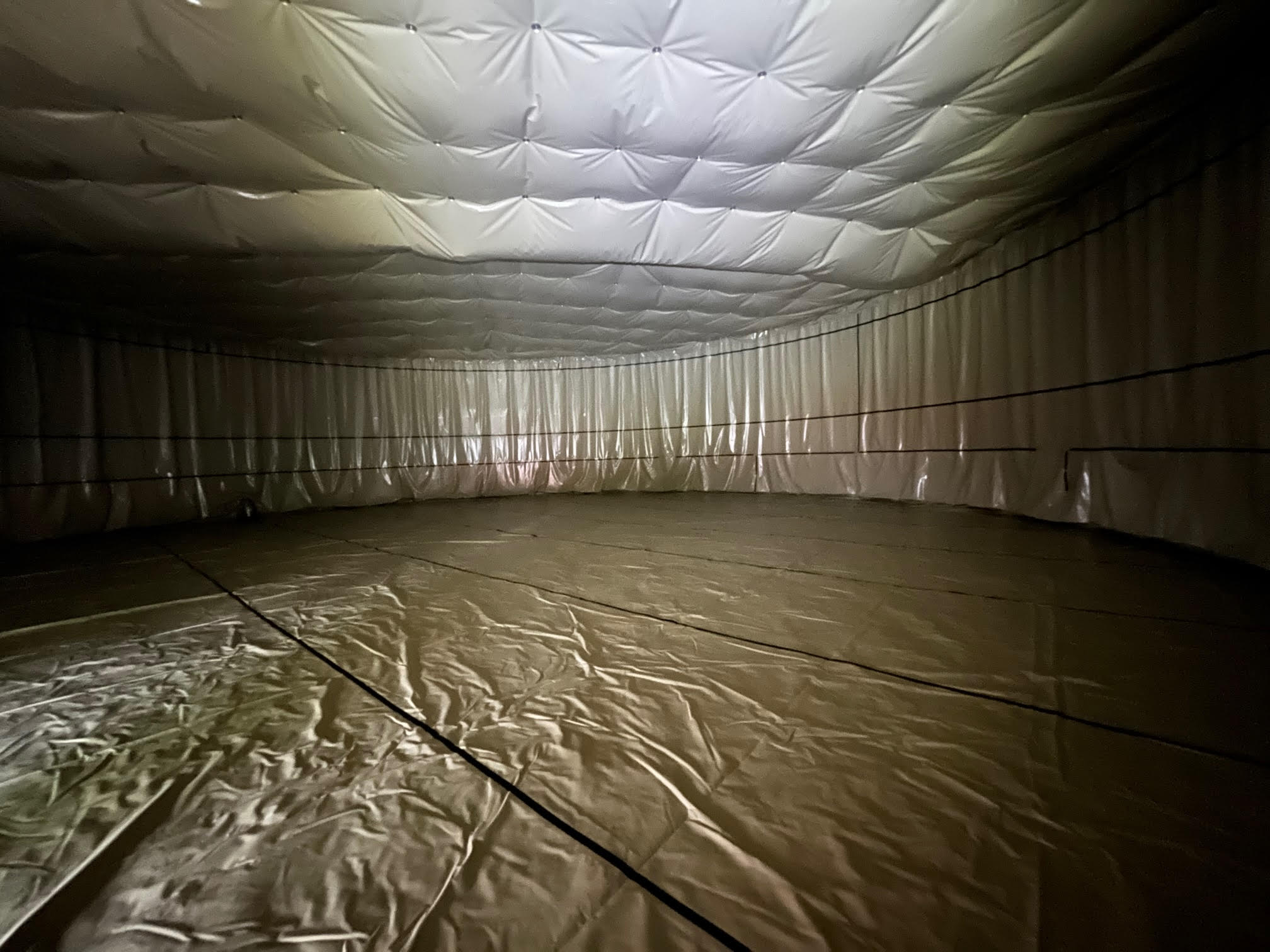The client operates one of the largest combined cycle gas power stations in Australia, capable of producing 630 MW of electricity. In modern high efficiency Combined-Cycle Gas & Steam Turbine (CCGT) plants, electrical energy is generated by both a gas turbine and steam turbine. Waste heat from the gas turbine is captured and used to superheat steam to generate power through the steam turbine. The combination of these two thermodynamic cycles significantly increases plant efficiency.
Demineralized and deionized water is required for the high-pressure boiler feed water used in steam generation at these plants. Impurities in the feed water can initiate detrimental corrosion in the boiler, potentially leading to catastrophic failure. The feed water is treated on site with two processes consisting of cartridge filtration, reverse osmosis, membrane degasification, and electrodeionisation. After treatment, the feed water needs to be stored and protected from contamination in a large capacity tank when it is not being used in the power generation process.
After 14 years of service the demineralized water tank in question was showing signs of deterioration and the Power Station made the decision to take the tank offline to remediate the steel tank structure and replace the internal liner system. This was quite a complex operation and involved:
· Removal of several structural steel panels from the tank for access.
· Removal and storage of approx. 60,000 1” (25mm) nylon floating balls from inside the tank.
· Removal of the existing butyl rubber liner and suspended roof system.
· Rust removal and restoration of the steel tank panels.
ᄋᅠᅠᅠᅠᅠᅠᅠᅠInstallation of a fully factory fabricated geomembrane tank liner.
· Installation of a fully factory fabricated geomembrane roof suspended from the structural roof
· Onsite welding of roof liner to the tank liner walls at top of tank.
· Re-installation of the floating nylon balls used to (theoretically) reduce the diffusion of gases (O2 and CO2; harmful for water-steam cycle) into thestored water.
Because the power station was in a maintenance shutdown mode, the works had to be completed within 14 days so as not to impact ongoing power generation.
Material selection for the liner and roof system was based on complex criteria with key requirements being:
· Chemical resistance to de-mineralized water at raised temperatures.
· Chemical resistance to corrosion inhibiters used in the feed water.
· No leaching of geomembrane formulation additives into the demineralized water.
· Abrasion resistance to floating nylon balls
· Ability to be factory fabricated.
· Sufficient strength to be self-supporting over 21’ (6.5m) vertical drop.
Demineralized water can be extremely aggressive to polyolefin materials formulated with antioxidant and UV stabilization packages, which has resulted in notable failures of similar tank liner systems. After consideration of all the criteria, the XR-3 geomembrane was selected for the tank due to its proven history in demineralized applications, abrasion resistance and superior tensile strength. The geomembrane, produced by Seaman Corporation, is classified as an Ethylene Interpolymer Alloy (EIA) geomembrane, and is manufactured using a high strength knitted and sealed fabric, coated in a proprietary EIA formulation. The geomembrane exhibits excellent thermal and dimensional stability, which is ideal for this tank application.
The liner was computer designed and factory fabricated to a high degree of accuracy to ensure a perfect fit inside the tank. After factory fabrication, the geomembrane was folded, palletized, and wrapped for delivery to site. The geomembrane roof was also factory fabricated in the same manner.
As the tank could only be taken off-line for 14 days, detailed planning was critical to the success of the project. Once off-line, several steel panels were removed to enable access, all of the floating balls were removed and stored for re-use, and the existing butyl rubber liner was removed and disposed of. The most time-consuming part of the project was the removal of surface rust and re-coating of the interior of the steel tank panels. Once this was complete the factory fabricated liner was installed and mechanically fastened at the top of the tank so it hung vertically (see Figure 1). The roof section of the liner was suspended from the roof structure of the tank and also mechanically fastened at the top of the tank walls, before welding the skirt of the roof section to the liner on the walls while in-situ (see Figure 2). Finally the removed steel panels were reinstalled and the retained and cleaned floating balls re-introduced.
This project highlights the need for appropriate material selection, in conjunction with understanding the construction methodology, e.g., in this case the material needed to be fully factory fabricated because fabrication on site was not possible due to the confined site and short installation time scale.
Access inside the tank was extremely limited and it was physically not possible to conduct any site fabrication work without partial disassembly of the tank. As a result, the wall and roof liner/geomembrane had to be completely factory fabricated. The XR-3 tank liner was fabricated to a high degree of accuracy to meet the tight tolerances for the tank walls. After detailed computer aided design, XR-3 geomembrane panels were laser cut from roll stock at Fabric Solutions in Queensland, Australia. The geomembrane was factory welded together also at Fabric Solutions.

